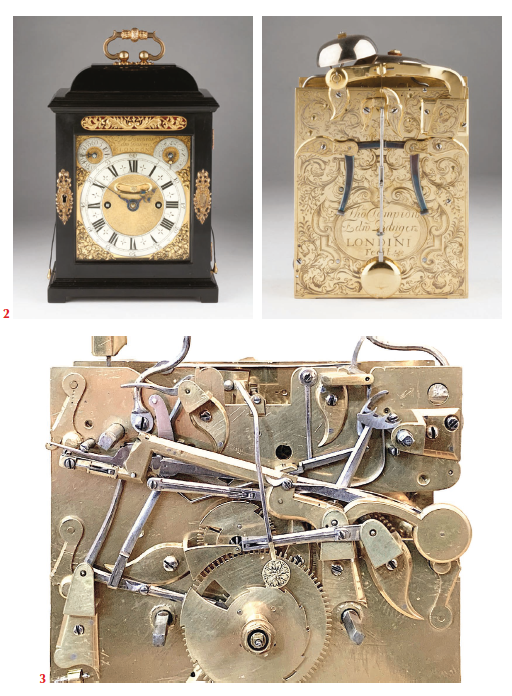Beneath the Dial is the first text in almost 40 years devoted to pull repeat striking in early English clocks. Written by Sunny Dzik (Engraving on English Table Clocks), the book relies on the expert technical contributions of Roger Still, a world expert on pull-repeat mechanisms. Published in 2023 in Oxford by Holywell Press, the book is being sold through Jeff Formby, horological bookseller and other sources. See the How to Purchase menu tab above. The text is 600 pages with over 1,000 illustrations.
 The book is divided into two parts as shown in the Table of Contents displayed on this website. Part 1 reviews the origins of pull repeat striking during the last quarter of the 17th century touching on contributions by William Derham, Reverend Barlow, Joseph Knibb, Thomas Tompion, Daniel Quare and others who introduced new advances in striking designs that extended throughout the 18th century. Part 1 presents new information ranging from the role of Jesuit mathematicians on the development of the hour snail to a modern metallurgical analysis of clock bells.
The book is divided into two parts as shown in the Table of Contents displayed on this website. Part 1 reviews the origins of pull repeat striking during the last quarter of the 17th century touching on contributions by William Derham, Reverend Barlow, Joseph Knibb, Thomas Tompion, Daniel Quare and others who introduced new advances in striking designs that extended throughout the 18th century. Part 1 presents new information ranging from the role of Jesuit mathematicians on the development of the hour snail to a modern metallurgical analysis of clock bells.
Part 2 of the text presents a detailed Atlas which categorizes pull quarter strike designs for over 200 clocks and timepieces produced between 1675 and 1725. Using clear photos of mechanisms-- many never previously published, digital graphics, and links to web-based videos, the Atlas serves as a definitive reference for the surprising variety of pull quarter strike mechanisms. By focusing on design details, the text demonstrates relationships between clockmakers that have not previously been recognized. Work from a full range of more than 100 makers is presented. Examples include innovative designs from lesser-known makers such as Benjamin Bell and John Sands to descriptions of designs used by famous makers such as Joseph Knibb and Daniel Quare. The text is especially valuable for the clear description of Thomas Tompion’s strike-on-demand systems. The book concludes with a description of different solutions to common design problems faced by 17th and 18th century clockmakers, provides a glossary of terms used in strike-work, and includes a full index to all the clocks presented in the Atlas.
Presented as both a survey of the subject for the beginner and as a reference source for the horologist, Beneath the Dial does not require clock restoration experience but will be useful to those who do bench work. The book should prove valuable to collectors, clock dealers, restorers, auction houses, museum curators, and those interested in the history of 17th and 18th century science.
